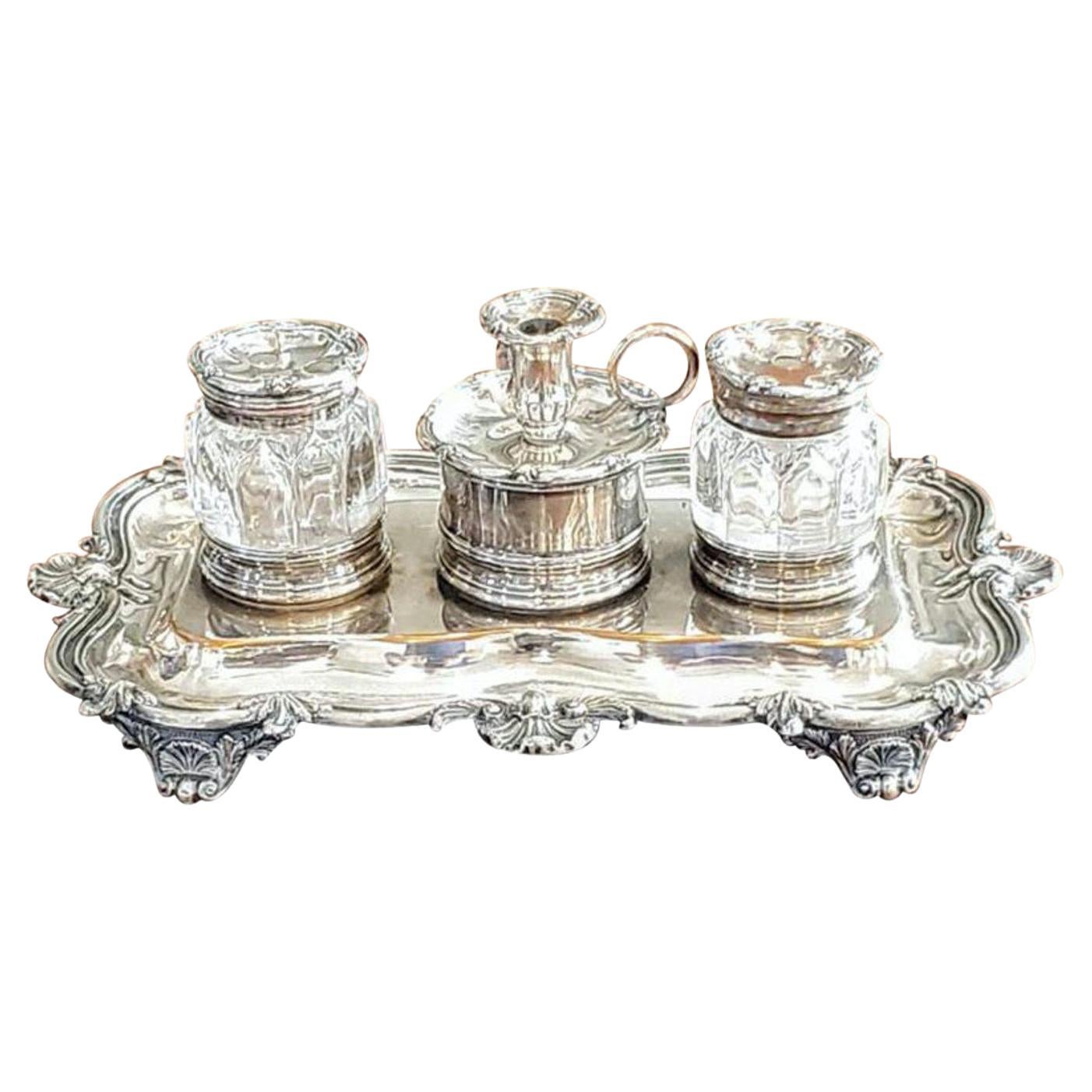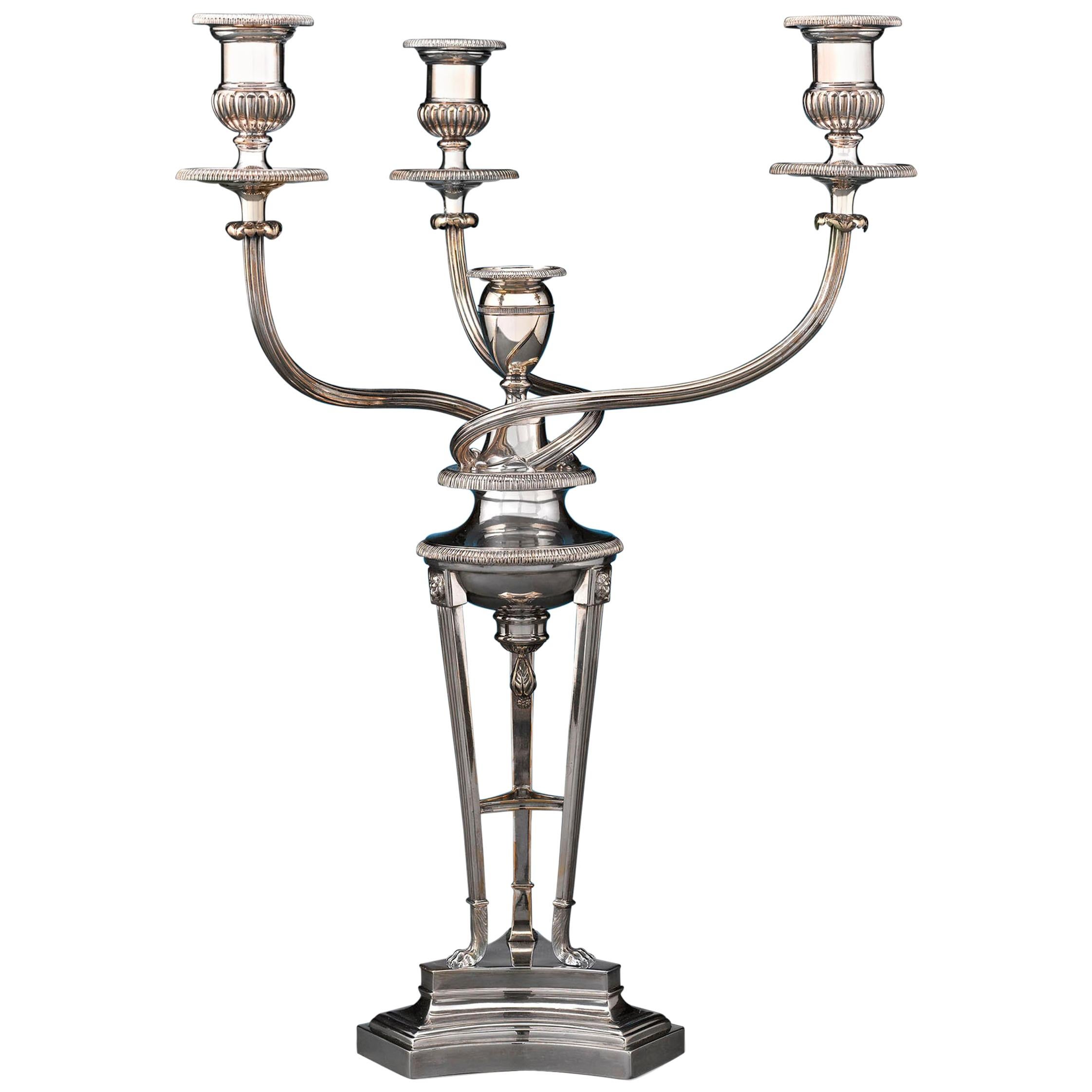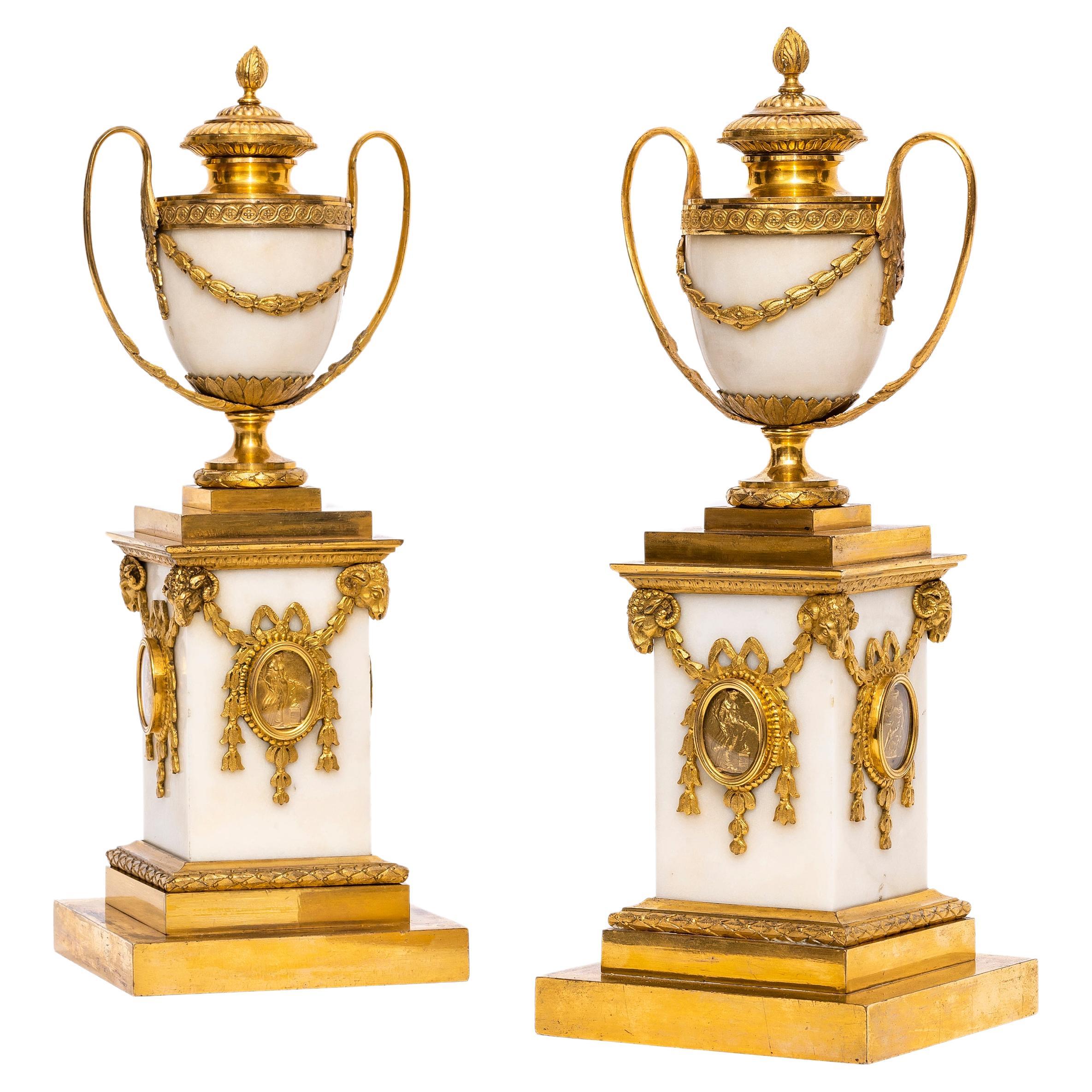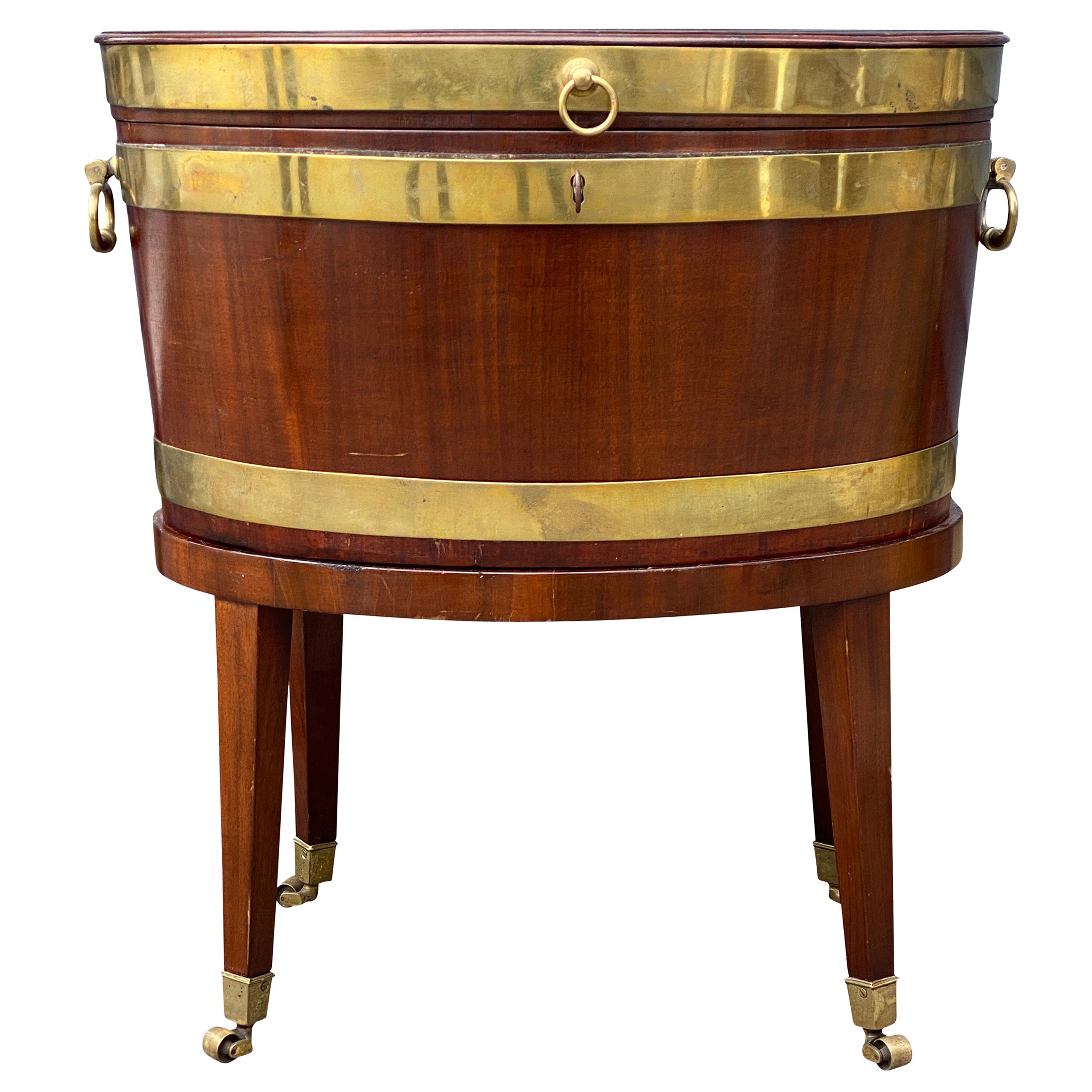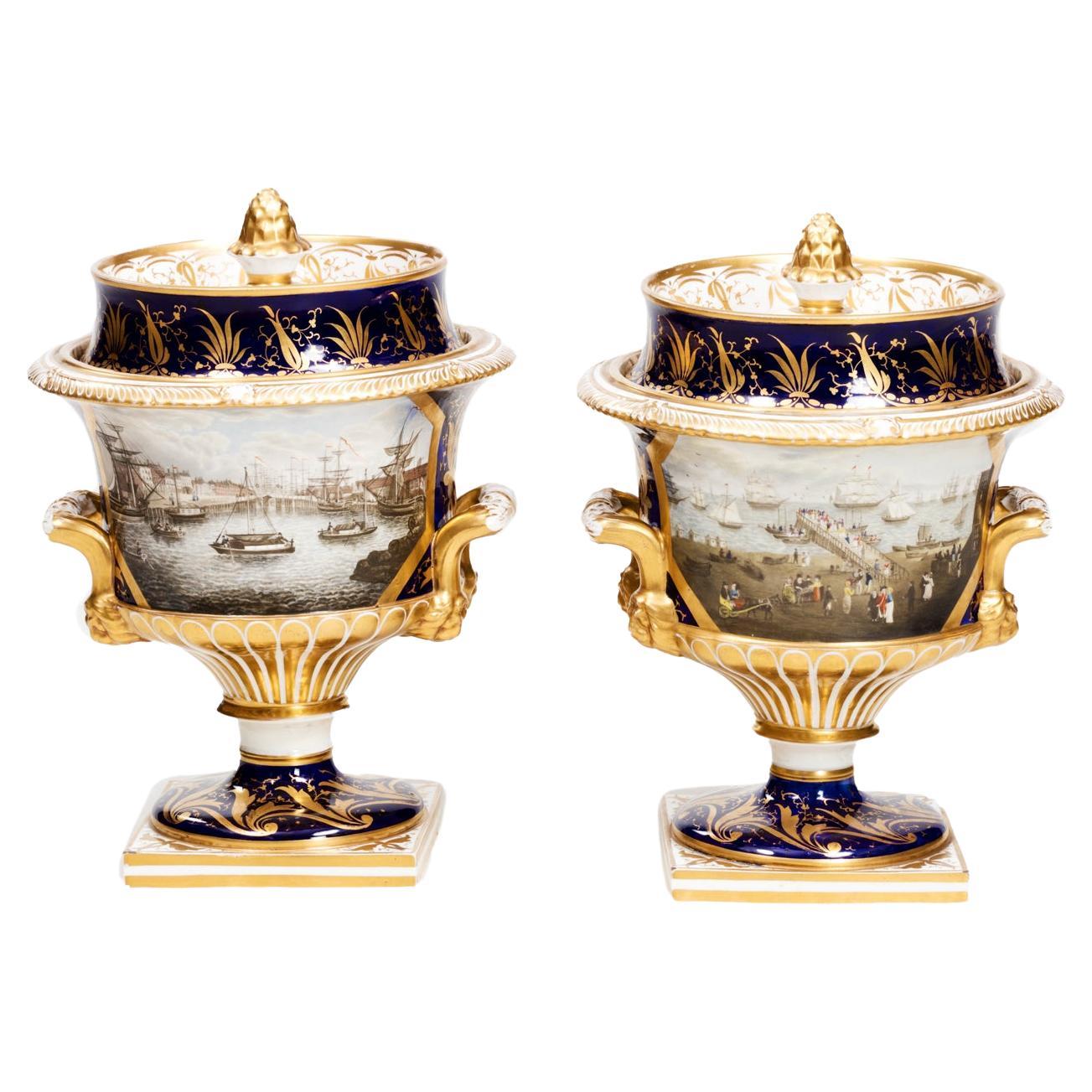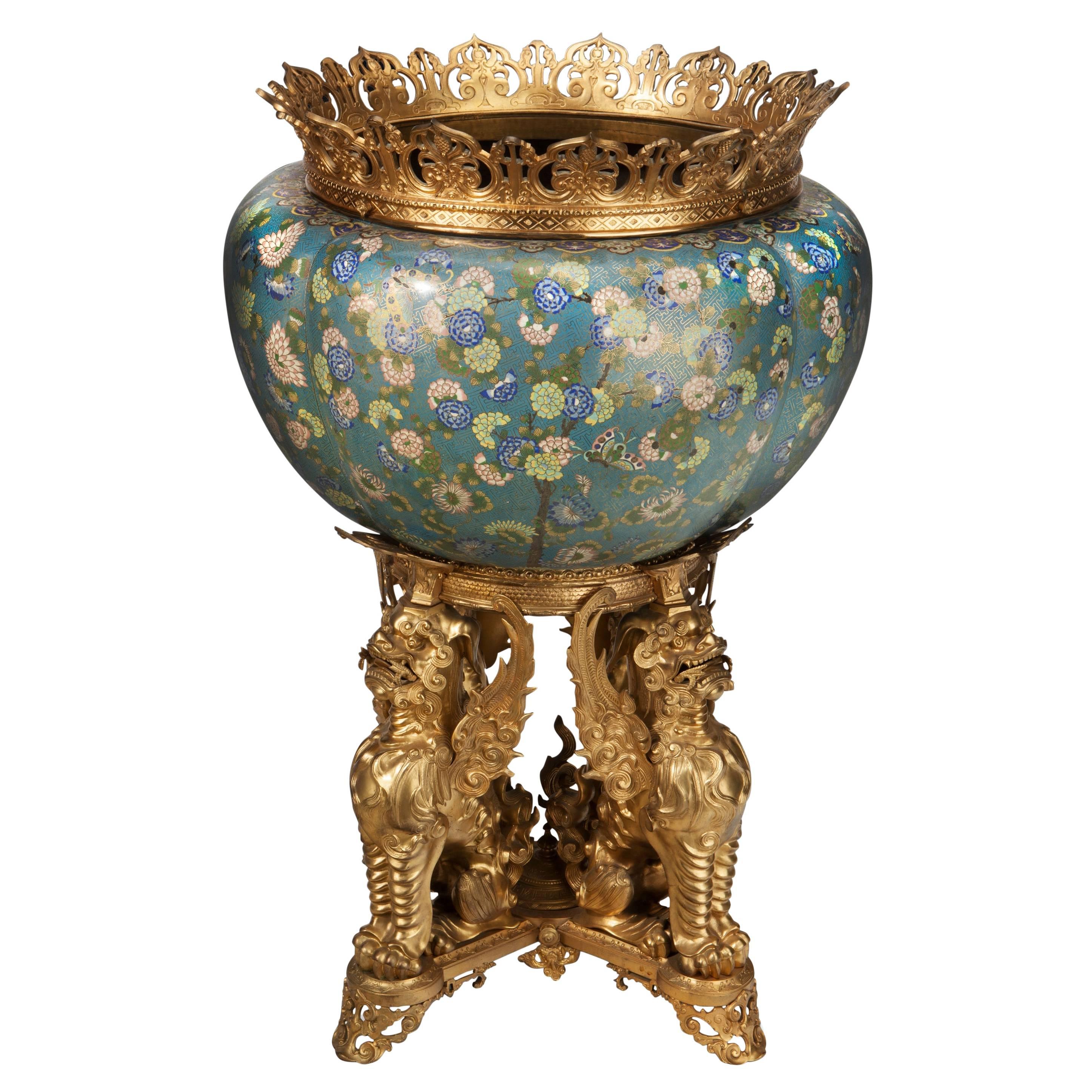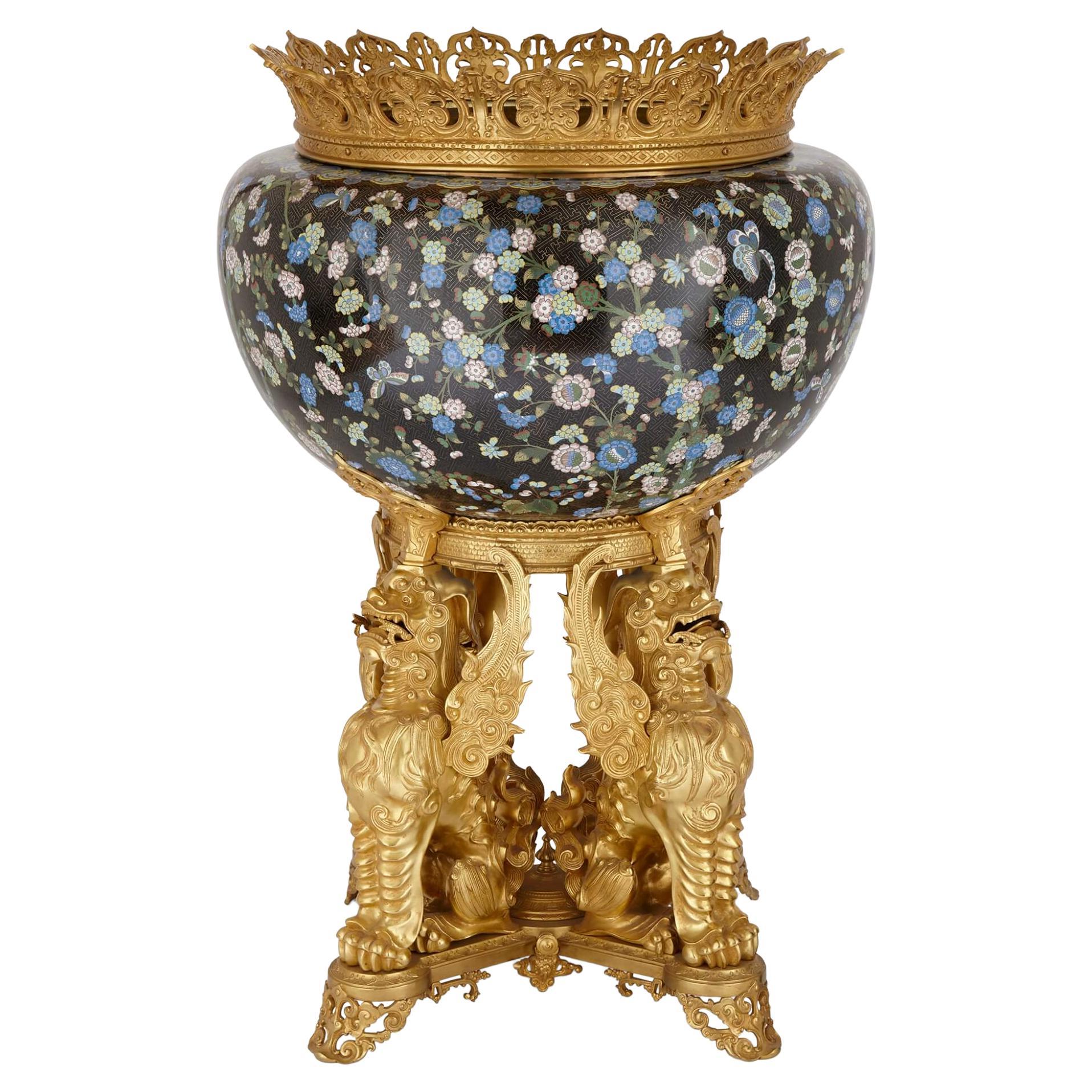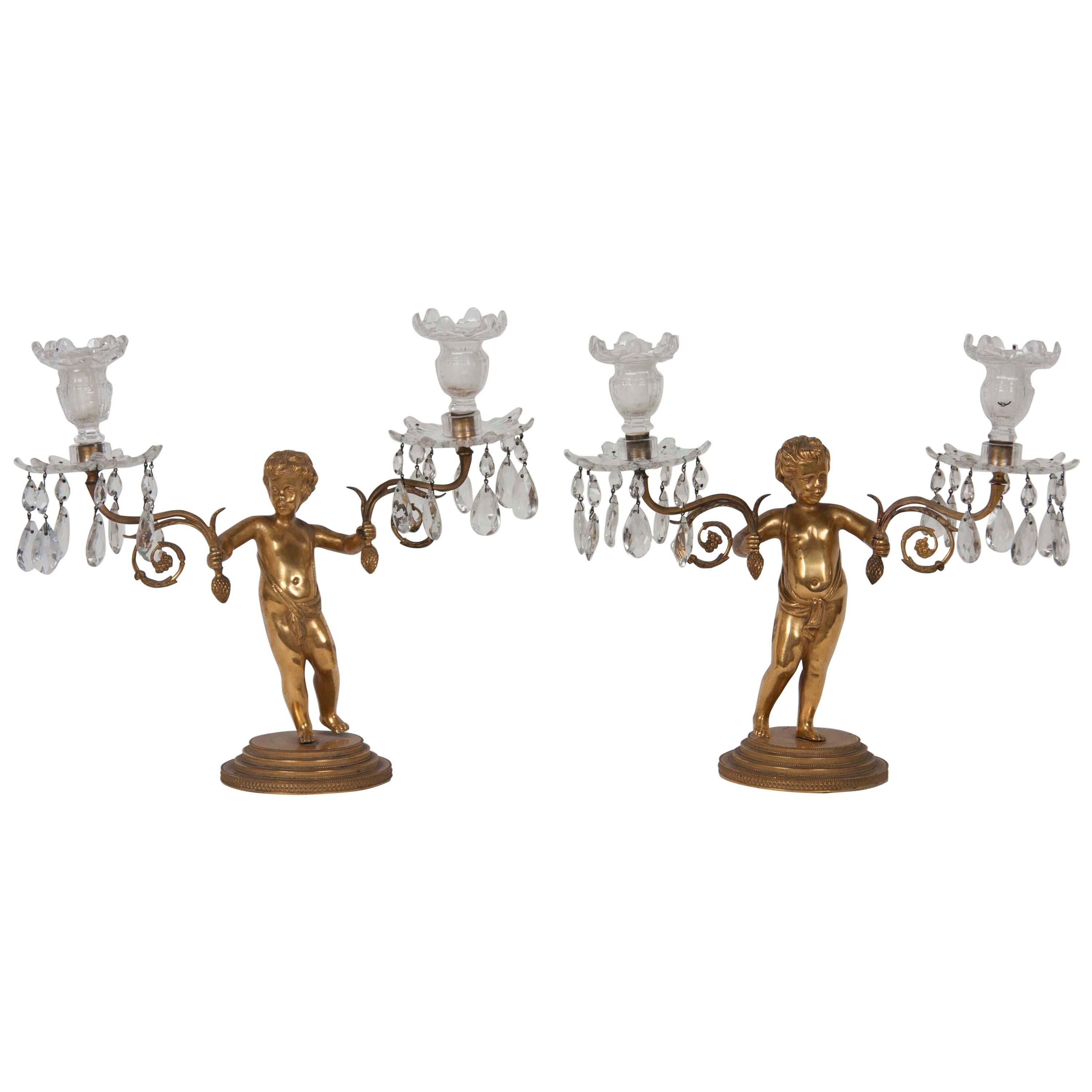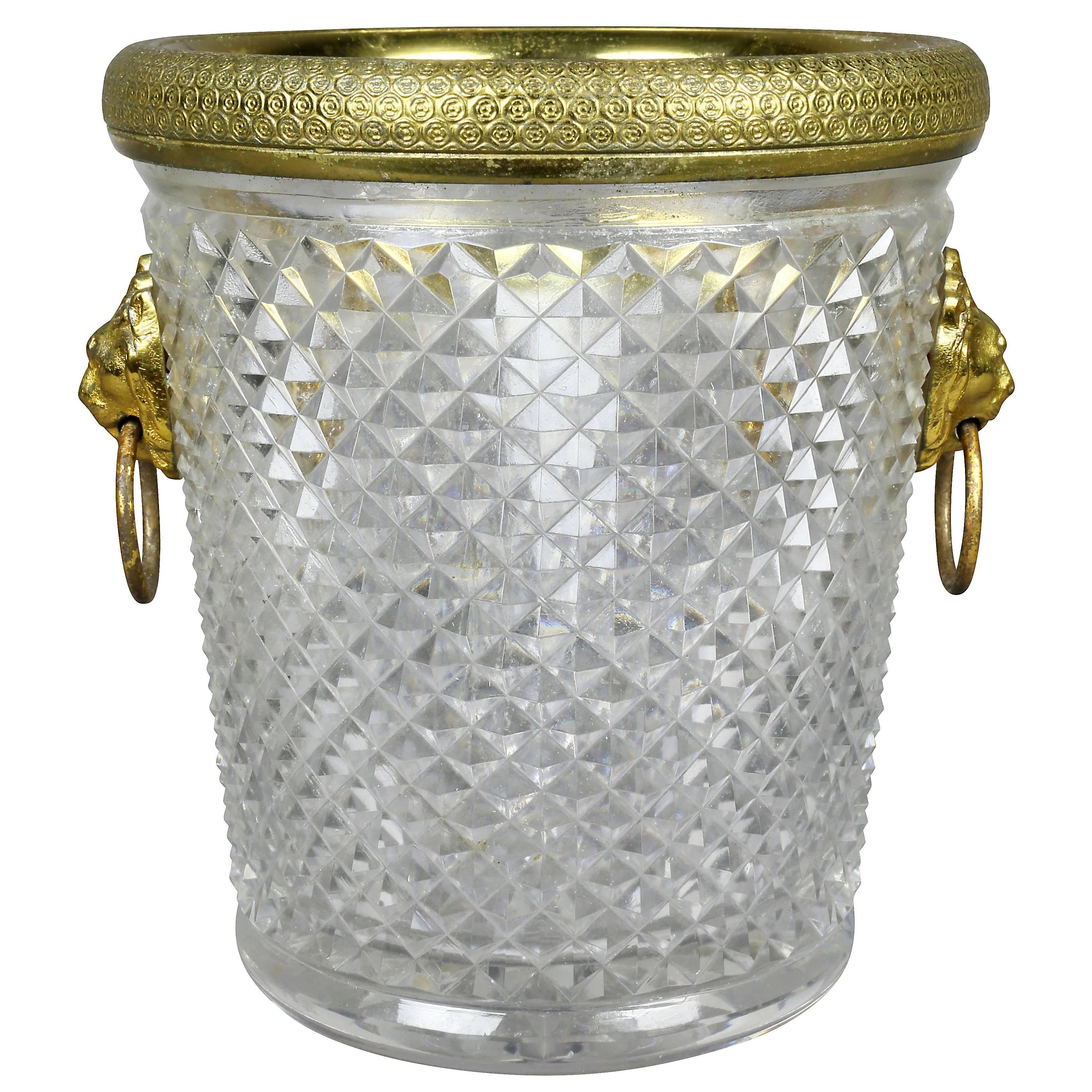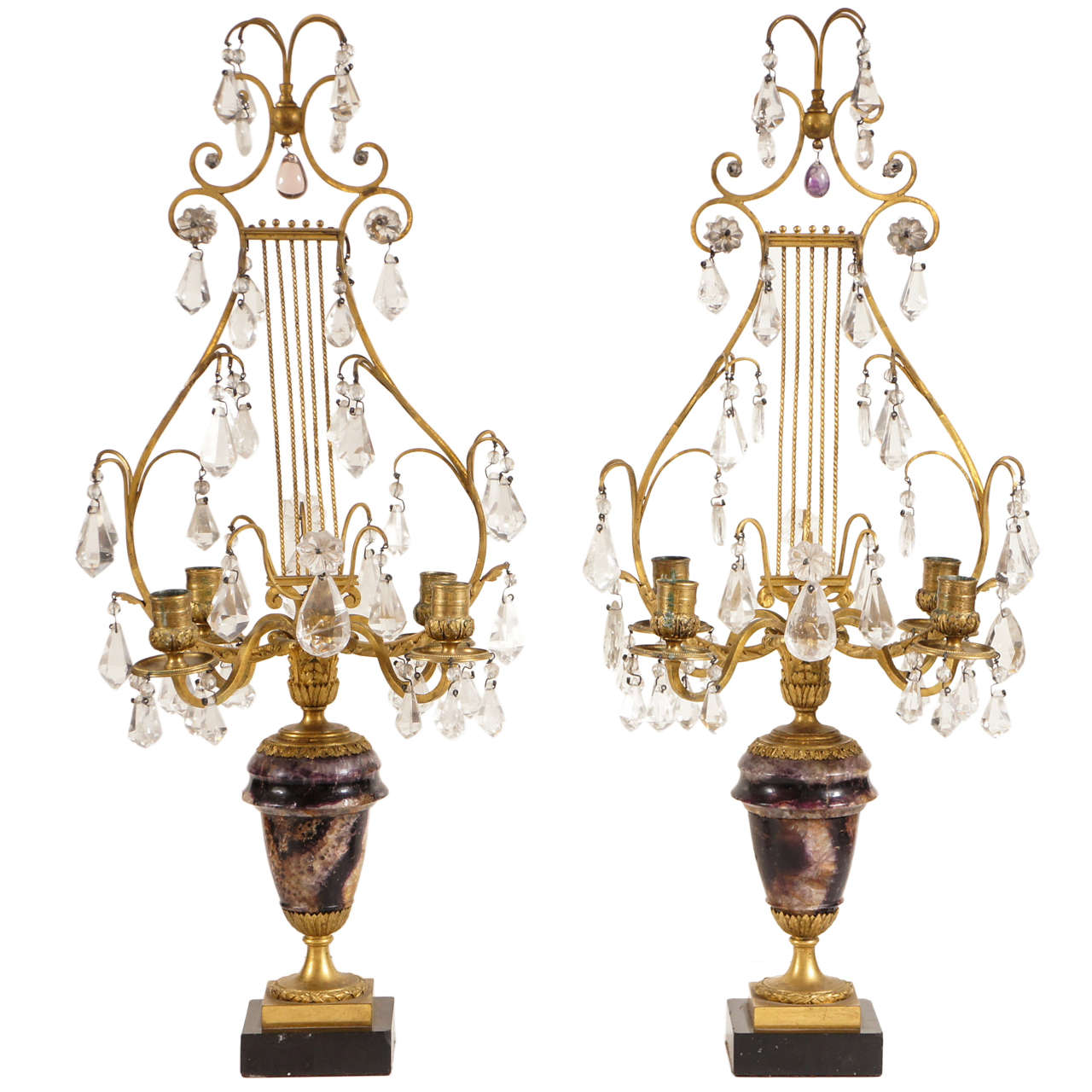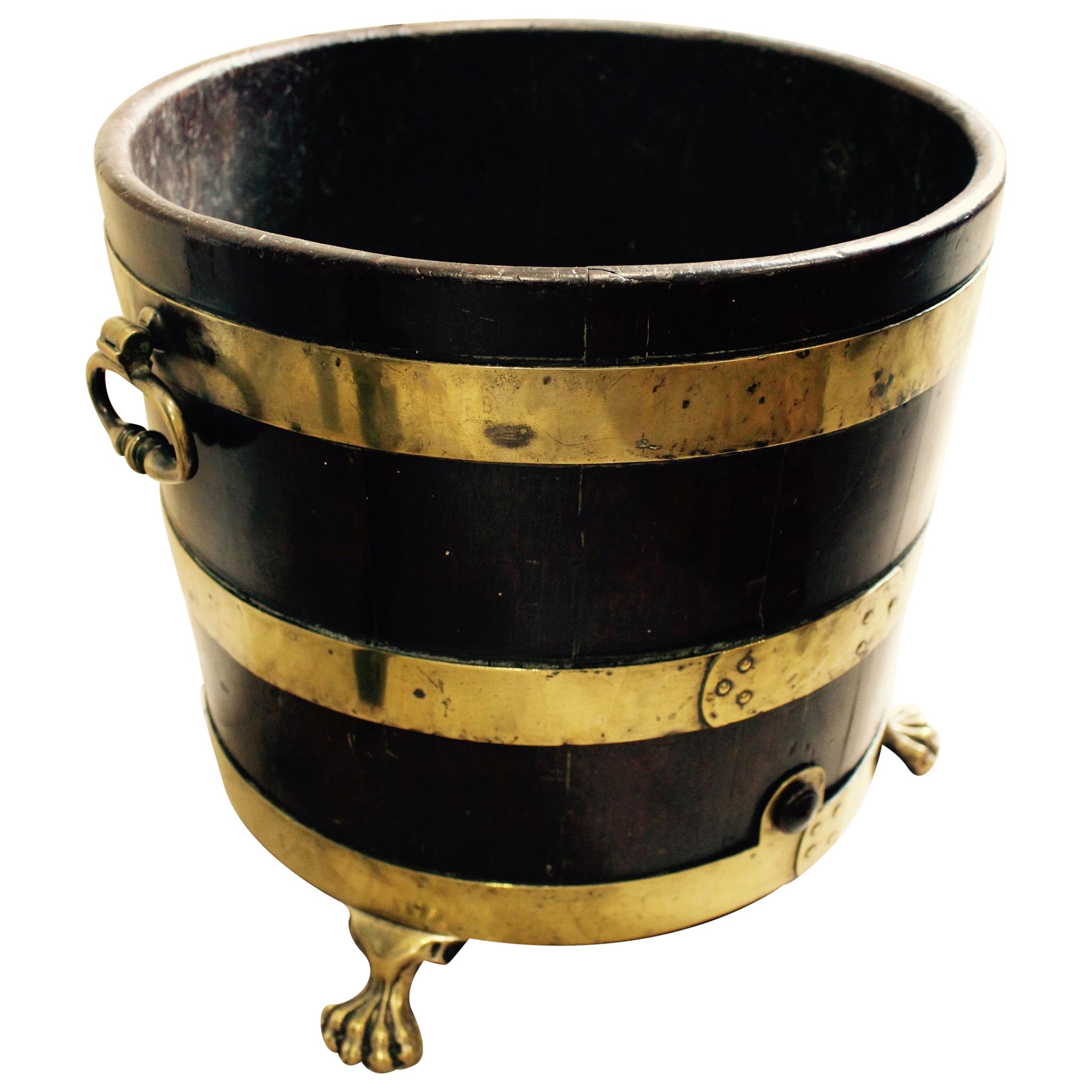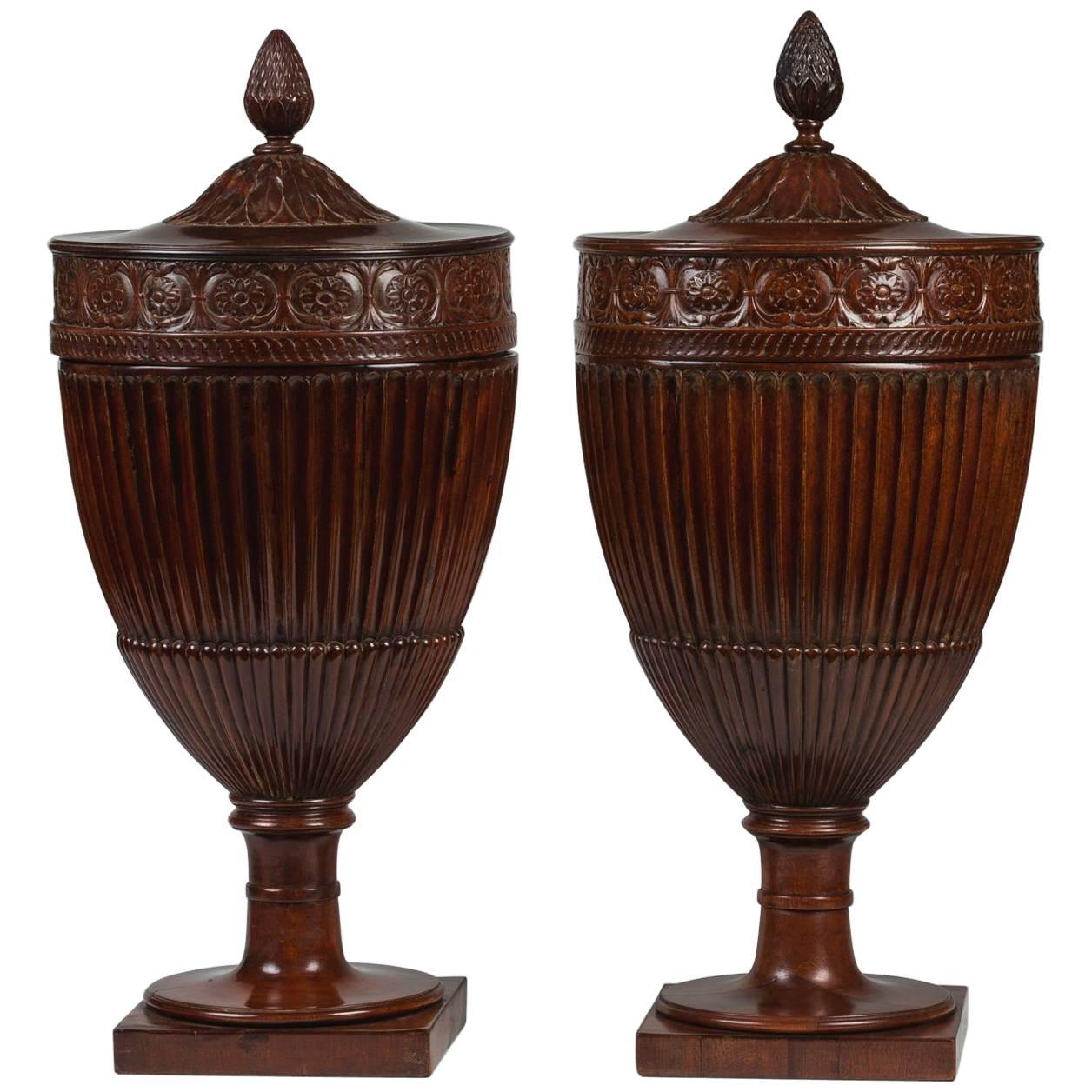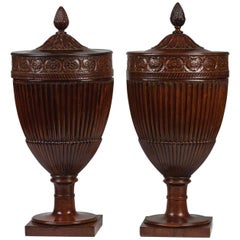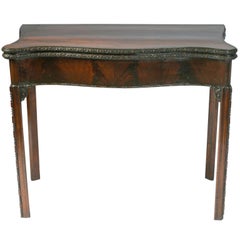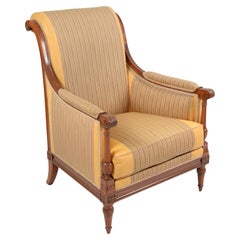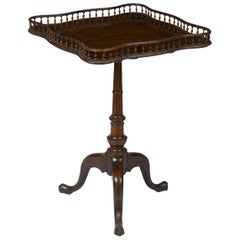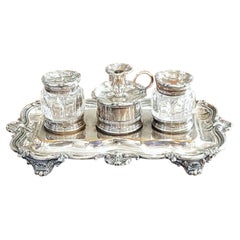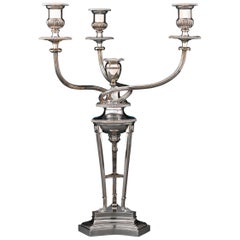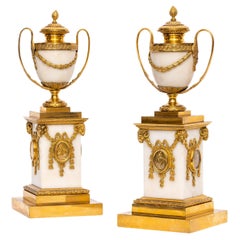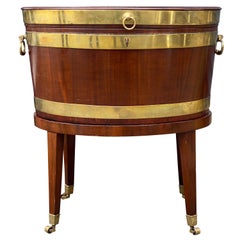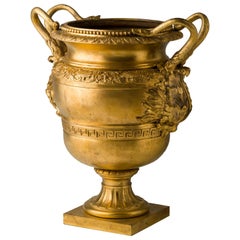
George III Neoclassical Ormolu Ice Pail Attributed to Matthew Boulton
View Similar Items
Want more images or videos?
Request additional images or videos from the seller
1 of 7
George III Neoclassical Ormolu Ice Pail Attributed to Matthew Boulton
About the Item
- Attributed to:Matthew Boulton (Maker)
- Dimensions:Height: 14.5 in (36.83 cm)Width: 12.75 in (32.39 cm)Depth: 9.5 in (24.13 cm)
- Style:George III (Of the Period)
- Materials and Techniques:
- Place of Origin:
- Period:
- Date of Manufacture:Late 18th Century
- Condition:Wear consistent with age and use. Customary surface wear to original ormolu.
- Seller Location:Kittery Point, ME
- Reference Number:Seller: 11941stDibs: LU83768752283
About the Seller
5.0
Vetted Professional Seller
Every seller passes strict standards for authenticity and reliability
Established in 2004
1stDibs seller since 2007
75 sales on 1stDibs
Typical response time: 1 hour
Authenticity Guarantee
In the unlikely event there’s an issue with an item’s authenticity, contact us within 1 year for a full refund. DetailsMoney-Back Guarantee
If your item is not as described, is damaged in transit, or does not arrive, contact us within 7 days for a full refund. Details24-Hour Cancellation
You have a 24-hour grace period in which to reconsider your purchase, with no questions asked.Vetted Professional Sellers
Our world-class sellers must adhere to strict standards for service and quality, maintaining the integrity of our listings.Price-Match Guarantee
If you find that a seller listed the same item for a lower price elsewhere, we’ll match it.Trusted Global Delivery
Our best-in-class carrier network provides specialized shipping options worldwide, including custom delivery.More From This Seller
View AllPair of George III Carved Mahogany Dining Urns
Located in Kittery Point, ME
Each urn with a cone finial, the collar carved with interlaces and a tapered fluted body on a spreading socle. Formerly with spigots.
Provenance: Ginsburg & Levy, Inc., New York Bos...
Category
Antique Late 18th Century English George III Urns
Materials
Mahogany
$10,000 Sale Price / set
20% Off
George III Mahogany Game Table
Located in Kittery Point, ME
The serpentine rectangular hinged top with a flower-carved edge enclosing a green baize-lined playing surface, on square canted legs with foliate carved corner brackets.
Category
Antique Late 18th Century English George III Game Tables
Materials
Wood
$2,920 Sale Price
20% Off
Directoire Mahogany Bergère Attributed to Georges Jacob
By Georges Jacob
Located in Kittery Point, ME
A Directoire Mahogany Bergère Attributed to Georges Jacob, its curved back and padded armrests with finely carved baluster-shaped supports raised on turned front legs and sabre back legs.
With a spurious Jacob stamp to back rail.
The term "Directoire" refers to a historical period following the French Revolution (1789) and preceding the First Empire when Napoleon reigned, but also to a style of furniture and decoration covering a longer period from 1789 to 1804. It is characterized by the production of furniture with simplified forms and ornaments, inspired by antique decorations.
The profound social and political upheavals that marked this period had a direct impact on the production of Directoire furniture. The stripping down of furniture pieces, which had begun in the 1780s under the influence of Greek art, was accentuated during this period. The abolition of guilds by the revolutionaries also forced manufacturers in the Faubourg Saint-Antoine to simplify shapes and materials.
Elegant and graceful, the furniture is generally small-scale. They retain the Louis XVI structure. The Directoire style adopts clean shapes, straight lines, simple curves, flat surfaces and right angles. Lines accentuate geometric shapes inspired by Antiquity. A typical trait is the pronounced rolled-over back, similar to a scroll illustrated in our bergere, evocative of the klismos chair. Only the more luxurious pieces of furniture use mahogany, an exotic and expensive wood.
Despite his humble origins, Georges Jacob rose to become one of the most renowned menuisiers of his day. Unlike many artisans who joined their fathers or brothers in the middle-class family trade of furniture making, Jacob was from a peasant family and moved to Paris at sixteen to begin his career. He apprenticed in a joinery workshop and eventually became a master in 1765. He developed a reputation for producing inventive designs for chairs, beds, and screens carved with such motifs as twisted ribbons, guilloches, beading, and fluting.
Jacob's reputation grew quickly, eventually spreading outside France; the future King George IV of England, Gustavus III of Sweden, and several German princes...
Category
Antique Late 18th Century French Directoire Bergere Chairs
Materials
Mahogany
George III Mahogany Tilt-Top Tea Table
Located in Kittery Point, ME
The square serpentine tilt-top with a spindle gallery, above a tapering turned column raised on three cabriole legs terminating in pad feet.
Category
Antique Late 18th Century English George III Card Tables and Tea Tables
Materials
Mahogany
Louis XV Ormolu-Mounted Marquetry Bureau en Pente, attributed to Migeon
By Pierre Migeon
Located in Kittery Point, ME
The hinged fall front opening to reveal a fitted interior with drawers above a slide enclosing a concealed well with two drawers, raised on cabriole legs headed by scrolling chutes r...
Category
Antique Mid-18th Century French Rococo Desks and Writing Tables
Materials
Bronze
$6,500 Sale Price
56% Off
Set of Four Empire Ormolu Three-Light Wall Sconces, Attributed to Ravrio
By André-Antoine Ravrio
Located in Kittery Point, ME
Each backplate topped with a mask of Athena surmounted by an owl and ending in a stylized bellflower and anthemion, issuing three leaf-wrapped scrolling arms. Electrified.
André-Antoine Ravrio (1759-1814) was a French sculptor in bronze and was made a master founder in 1777 setting up in business 1790. Although Ravrio enjoyed success during Louis XVI’s reign, he achieved far greater fame under Napoleon. He took part in the first Exposition de l’Industrie, Paris, 1803 and then won a silver medal there in 1806. The same year he supplied a number of bronze furnishings for the Empress Joséphine’s apartments in the Tuileries and in 1810 was appointed as the Emperor’s chief bronzier. In this capicity he supplied some of the finest Empire bronze pieces, girandoles, candelabras and lamps as well as ornate furniture...
Category
Antique Early 19th Century French Empire Wall Lights and Sconces
Materials
Bronze
$16,000 Sale Price / set
20% Off
You May Also Like
18th/19th Century English Georgian III Period Matthew Boulton Inkstand
By Matthew Boulton
Located in Forney, TX
A fine quality Georgian III period silver plated inkstand by celebrated English silversmith Matthew Boulton, displaying all of the timeless eleganc...
Category
Antique Late 18th Century English Georgian Inkwells
Materials
Silver Plate
Matthew Boulton Sheffield Plate Candelabrum
By Matthew Boulton
Located in New Orleans, LA
This remarkable Sheffield silver plate candelabrum by celebrated English silversmith Matthew Boulton displays all of the timeless elegance and style of the period. Masterfully crafte...
Category
Antique Early 19th Century English Other Candelabras
Materials
Silver Plate, Sterling Silver
Pair 18th C. English Matthew Boulton Ormolu Mounted Carrara Marble Cassolettes
By Matthew Boulton and John Fothergill
Located in New York, NY
A Magnificent, Exceptionally Rare, Museum Quality Pair of 18th Century English Ormolu Mounted, Hand-Carved and Hand-Polished Carrara Marble Cassolettes, By Matthew Boulton. These beautiful ormolu-mounted white marble cassolettes are by Matthew Boulton (1728-1809) and John Fothergill (1730- circa 1782) published in their Pattern Book No. 1 (page 171, figure t) and reproduced in Sir Nicholas Goodison's Ormolu: The Work of Matthew Boulton (New York, 1974, page 383, figure 161).
Josiah Wedgwood (1730-1795) was a close friend of Boulton's and his patterns are thought to be the source for the medallions used on the plinths of these. Boulton's medallions of classical figures are almost identical to the cameos and intaglios made by Wedgwood and his partner James Tassie.
Molds for these examples can be found in the Wedgwood Collection at the Victoria & Albert Museum. All derive from the same classical source of Renaissance gems. Many gem collections in Europe were widely published at this time and Boulton's library contained A. F. Gori's Museum Florentinum (1731-1766), in which gems from the Medici collection were engraved.
The subjects of the medallions on this pair are: Pomona, a Roman goddess of fruit trees, gardens, and orchards, and depicted carrying a basket on her head overloaded with fruit, tumbling to the ground, shown once on each vase. Hygeia, once on each, with an olive branch in her right hand, as seen in Tassie's reproduction of Valerio Belli's gem, and holding a snake in her left hand over an altar. This was produced by Wedgwood both as an intaglio and as a cameo. Venus & Cupid, only on one vase, showing Venus leaning against a column with a pike, and giving a helmet to Cupid. Aesclepius, Greek GD of medicine, only on one vase, depicted with a snake wrapped around his staff .The last medallion subject is either Diomedes or Perseus, shown once on each vase, depicted as a conquering hero. Boulton asked patrons to choose from a limited repertoire of motifs, and therefore each vase or pair of vases is adorned with their own combination. Boulton used nine medallion subjects on recorded vases of this type.
PROVENANCE & COMPS
Another pair of this model, with slightly less elaborate lids and finials, from a private collection are illustrated in Goodison's Matthew Boulton: ORMOLU, (page 379, figure 153). A further example is in a private New York collection. This pair, which was acquired from Hotspur in 1981, was formerly in the Collection of Marjorie Wiggin Prescott, sold Christie’s, New York, 31 January 1981, lot 76. The Prescott Collection was one of the most important English furniture collections of its time. The sale consisted mostly of late 17th and 18th century English furniture...
Category
Antique 1770s English George III Candlesticks
Materials
Crystal, Carrara Marble, Bronze
George III Mahogany Oval Cellarette
Located in Essex, MA
Oval hinged top over a conforming brass strapped case with brass handles, raised on square tapered legs with casters. Ex Naill Smith Antiques.
Category
Antique Late 18th Century English George III End Tables
Materials
Mahogany
Pair 18th Century Handpainted Royal Worcester Lidded Ice Pails
By Royal Worcester
Located in Dublin 8, IE
Pair 18th Century Royal Worcester lidded ice pails handpainted with views of Portsmouth Harbour. This pair with acorn finials to the covers and scrolled handles either side of the bo...
Category
Antique 18th Century English Georgian Urns
Materials
Porcelain
Ormolu and Cloisonné Enamel Jardinière Attributed to F. Barbedienne
By F. Barbedienne Foundry
Located in London, GB
The large central circular form cloisonne enamel jardinière decorated with vari colored plum flowers and butterflies on a blue ground, with a pierced ormolu rim featuring a pineapple motif resting on a finely cast ormolu base with four legs in the form of winged Foo lions.
The ormolu French, the enamel Chinese.
This impressive jardinie`re is very much in the manner of objects in enamel produced by Ferdinand Barbedienne in Paris in the last quarter of the 19th century which proved universally popular. Often these pieces were designed by Edouard Lievre (d. 1886) in the Oriental taste.
Ferdinand Barbedienne was a famous French metal worker and manufacturer. He presided over one of the most renowned and prolific foundries of Belle Époque Paris. His atelier created sculptures, clocks and bronze mounts of the highest quality, and his works were shown at numerous international exhibitions of the period, where he was rewarded with many medals. Among them the Grande Me´daille d'Honneur, in Paris in 1855 is particularly noteworthy.
In 1838 he associated with the engineer Achille Collas (1795-1859) who had just invented a process to reproduce statues at a smaller scale.
Together they founded in 1839 the company "Collas et Barbedienne" to reproduce casts of both contemporary artists and Greek and Roman antiquities. While working with Collas, Barbedienne actively pursued contracts with many sculptors of Paris contracting with David D'Angers, Jean-Baptiste Clesinger, and even producing some casts for Antoine Louis Barye as well as others. From 1860 to the years 1890, Barbedienne, eager to research new processes, experimented new techniques in champleve´ and cloisonne´-enamels, to compete with Japanese importations, very fashionable then.
When Collas died in 1859, the business was left to Barbedienne as sole owner. The company who had over 300 employees was prosperous as well in the field of reproductions as in its department specialized in the casting of monumental bronzes.
In 1865, he was appointed President of the Reunion of Bronze Makers until 1885.
After the 1870 war...
Category
Antique Late 19th Century French Chinoiserie Planters, Cachepots and Jar...
Materials
Enamel, Ormolu
